The Odysseus Moon Lander Won’t “Call Home” but Second Moon Mission Is On Track For 2024
24th Jan 2024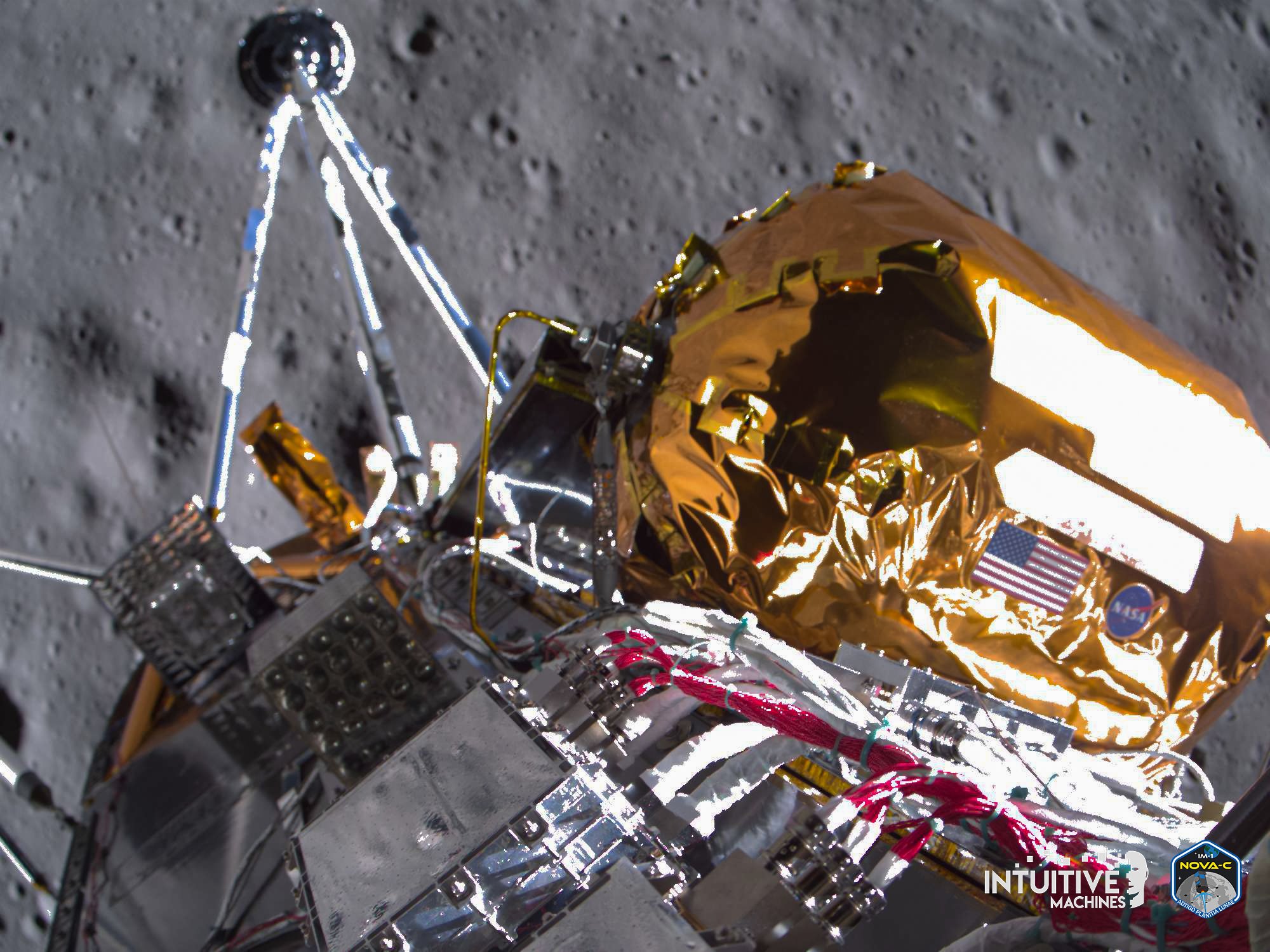
Following the failure of Astrobotic Technology’s Peregrine lander, which sadly burned up in Earth’s atmosphere, attention now turns to the upcoming launch of Intuitive Machines’ IM-1 Nova-C lunar lander.
The Odysseus spacecraft successfully landed on the Moon on 22nd February. The US is back on the surface of the Moon after more than half a century!
It’s over for Odysseus but just the beginning for Intuitive Machines
Intuitive Machines’s Odysseus lander failed to ‘call home’ after powering down, the company shared on X (Twitter). The Intuitive Machines team started listening for Odie’s wake-up signal on 20 March with no luck.
The company, which successfully landed American spacecraft on the Lunar surface for the first time since 1972, officially ended the mission.
However, it looks like Intuitive Machines second Moon mission is still on track to launch before the end of this year, TechCrunch reports. It is said, that the IM-2 mission will deliver NASA payloads that will search the lunar South Pole for water ice, a resource that could eventually be processed into propulsion for rockets or to support a permanent lunar astronaut habitat.
Odysseus Moon Lander Enters Dormant State: Fresh Surface Imagery
Updated on 29th February
In a press conference on 28th February, Intuitive Machines reported that the spacecraft remained functional but was scheduled for a planned shutdown within a few hours.
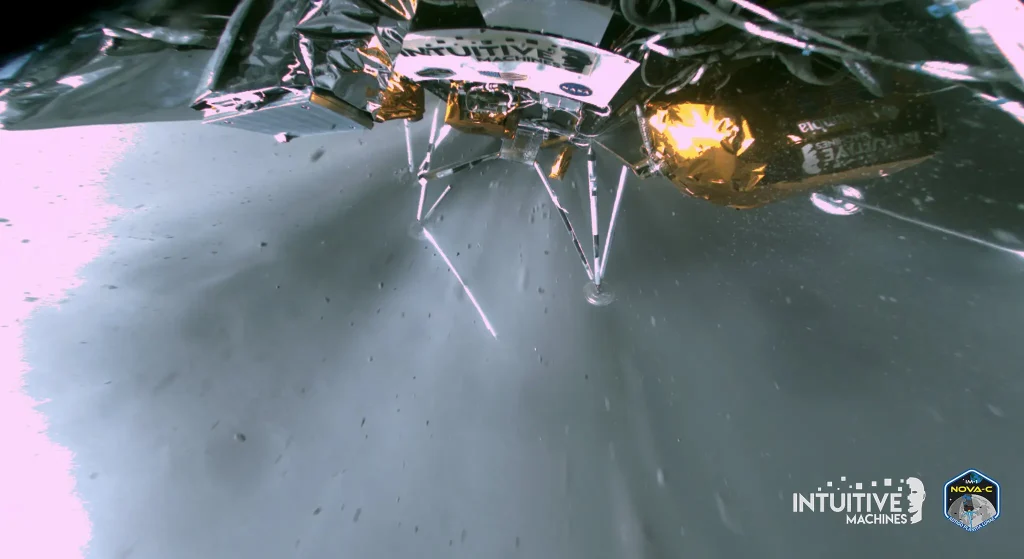
Over the weekend, engineers worked tirelessly to expedite communication with Odysseus and retrieve data. The anticipated mission duration faced several adjustments, initially planned for nine or 10 days until the solar-powered spacecraft’s sunset. Challenges emerged as Odysseus was positioned at an angle, hindering its solar panels from attaining an optimal orientation for efficient sunlight absorption and power generation.
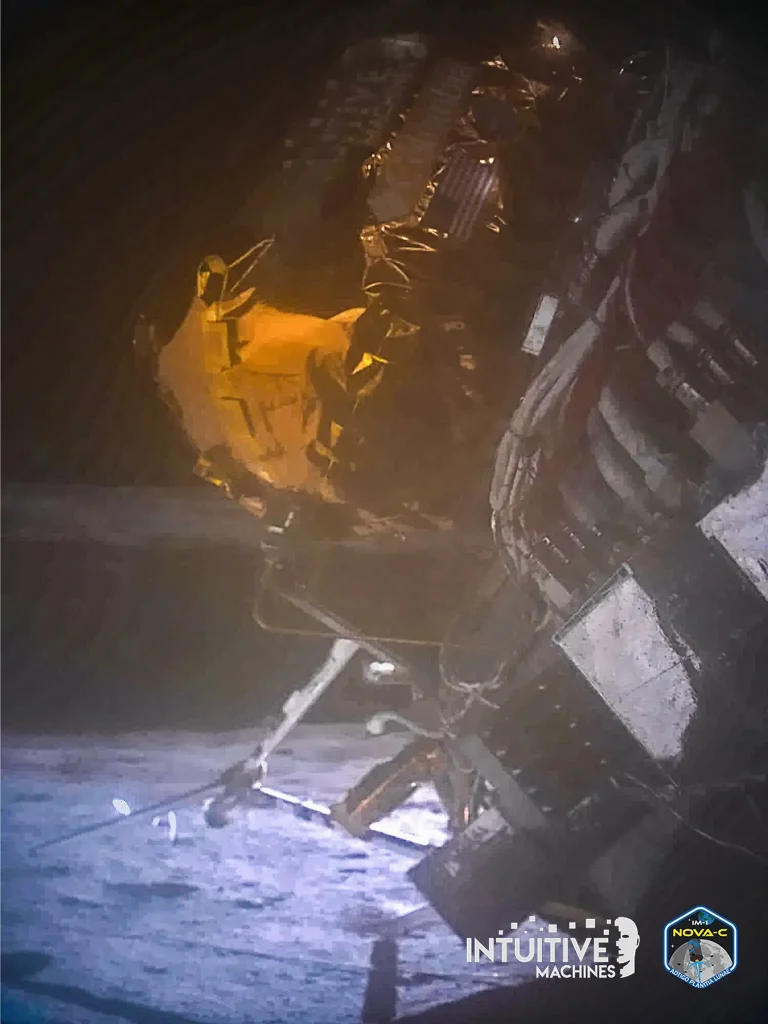
Intuitive Machines officials revealed that Odysseus experienced an unexpected topple, striking the ground with greater force than anticipated. Rather than executing a perfectly vertical landing, Odysseus moved sideways a bit when it landed.
The company will try to reactivate the Odysseus Moon Lander approximately two to three weeks later when the sun rises again. Dr. Crain of Intuitive Machines expressed optimism that the solar panels could still generate power. However, the remainder of Odysseus might face challenges enduring the lunar night, with temperatures plummeting to approximately minus 250 degrees Fahrenheit.
IM-1 lunar lander tipped over on its side
Updated on 26th February
What was first considered an “almost perfect soft-landing” of the first private lunar lander developed and launched by a private US company is now under question. The moon lander Odysseus is “alive and well” but resting on its side, which was announced during a televised media conference on 23 February, nearly 24 hours after the IM-1 mission landed on the moon. The company officials said they believed the lander is resting on its side a few kilometres from its intended landing site near the Malapert A crater in the south polar regions of the moon.
The lander “caught a foot in the surface, and the lander has tipped,” said Steve Altemus, chief executive of Intuitive Machines.
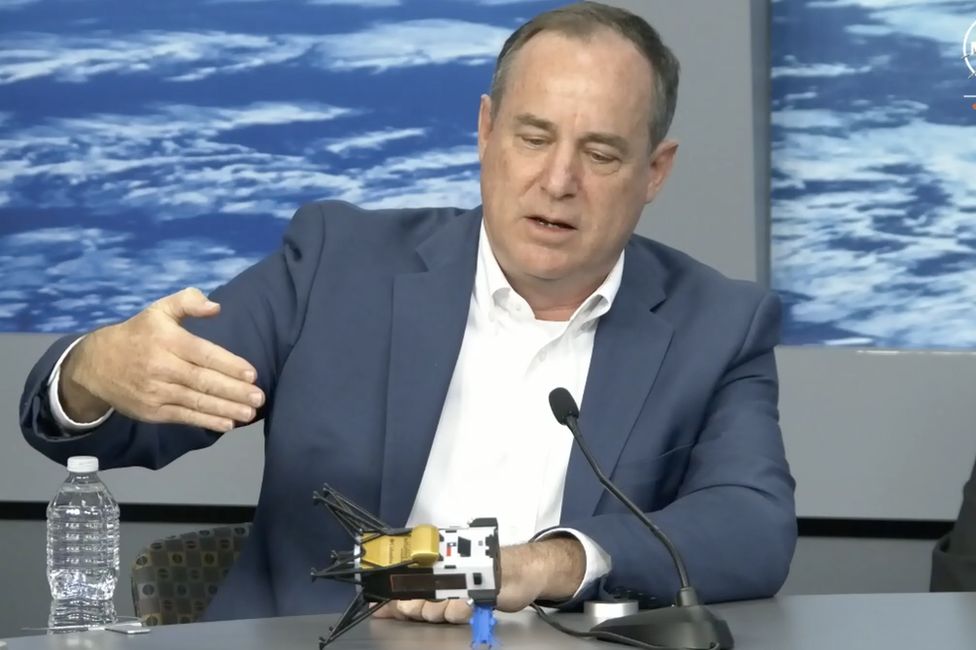
He suggested the lander came down faster than planned. The company revealed that human error led to a failure of the spacecraft’s laser-based range finders. It was supposed to descend straight down at one meter per second, but it actually came down three times faster with some sideways movement.
Even though the lander isn’t in the best position sideways, company officials are positive about most of its NASA science and technology payloads being in good shape for communication. Altemus mentioned that they believe they can still meet the needs of the commercial payloads. However, two of the spacecraft’s antennas face the surface, which makes communication with the lander difficult, according to Altemus. Additionally, there’s uncertainty about whether the solar energy panel on the top of Odysseus, now facing the wrong way, will work properly. But there’s a second array on the side that seems to be working fine, and the spacecraft’s batteries are fully charged.
Odysseus Is “Upright And Starting to Send Data”
Updated on 22nd February
After an intense wait, Intuitive Machine announces Odysseus’ successful landing, standing upright and initiating data transmission. This successful landing could outshine even Japan’s SLIM “Moon Sniper” mission, which made a soft touchdown but later was revealed to lose power quickly.
Touchdown: “Welcome to the Moon, Odysseus!”
Updated on 22nd February
Intuitive Machines’ uncrewed lunar lander landed at 6:23 pm ET (23:23 UTC), bringing the US back on the surface of the Moon after more than half a century! Intuitive Machines CEO Steve Altemus just announced on the webcast that the Odysseus lunar lander, nicknamed “Odie” or IM-1, is on the moon’s surface and transmitting.
“I know this was a nail-biter, but we are on the surface, and we are transmitting,” Altemus said. “Welcome to the moon.” The exact state of the lander is not yet clear, but contact has been confirmed!
The exact health of the craft is unclear, but it has landed, Intuitive Machines reports. So, officially, IM-1 is the first commercial spacecraft to land on the moon! Nova-C lander is loaded with a total of 12 payloads from NASA and commercial companies, which will carry out diverse science tasks on the surface of the moon. “It will prepare us for future human exploration of the Moon under Artemis”, NASA reports.
We’re waiting for exciting visuals from the moon landing and, of course, the comments from the Intuitive Machine & NASA team on the reasons for the weak signal.
Odysseus Prepares For Lunar Landing Today
Updated on 22nd February
The Odysseus lunar lander is scheduled to land today (22nd February). The spacecraft is currently in lunar orbit. NASA will begin live coverage of the descent at 14:00 CST/ 20:00 GMT. If all goes well, the landing should occur approximately 90 minutes later.
Hours before the expected landing, Odysseus snapped and sent a picture of the Bel’kovich K crater on the Moon. “It is an approximate 50 km diameter crater with mountains in the centre, made when the crater was formed,” Intuitive Machines wrote Wednesday (Feb. 21) on X, formerly Twitter.
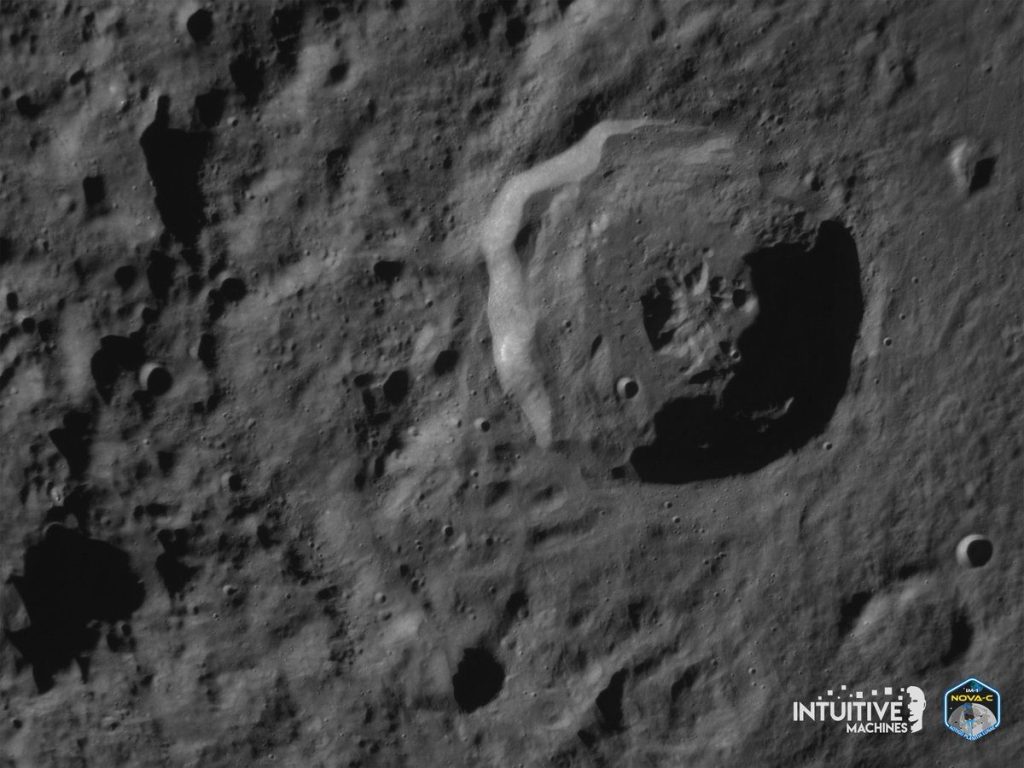
Odysseus Lander Sends Selfies With Earth
Updated on 19th February
The Odysseus spacecraft showed the first photos from its mission to the moon. The footage was taken shortly after the device separated from the SpaceX launch vehicle.
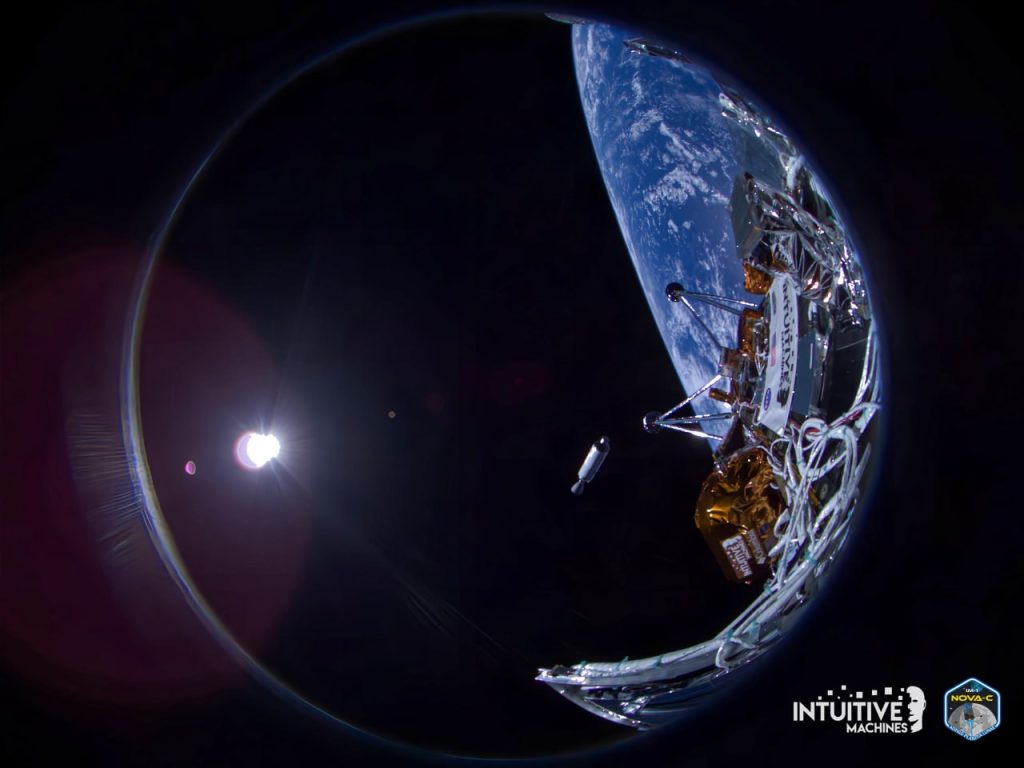
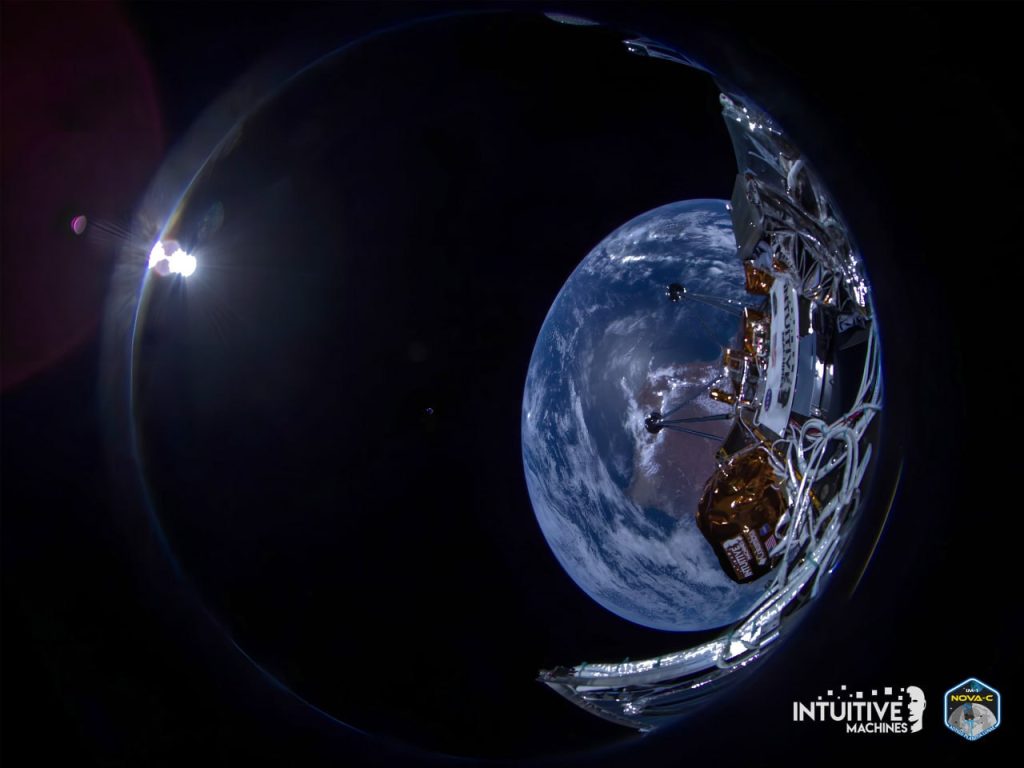
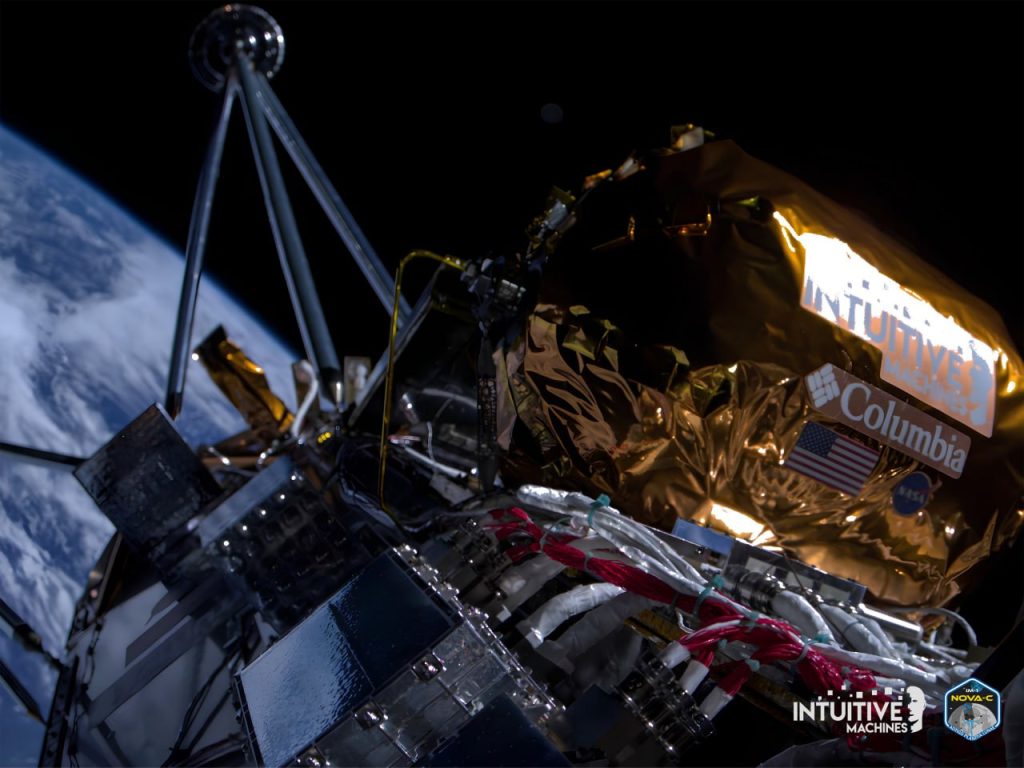
Currently, Odysseus is continuing his journey to the moon. The device is in good condition. The flight controllers are preparing planned trajectory correction manoeuvres to prepare it for lunar orbit.
Odysseus spacecraft Moon landing – day and time
Following a week of space travel, Odysseus is scheduled to establish orbit around the moon at an altitude of approximately 62 miles from its surface on Wednesday, 21st February. Subsequently, after a 24-hour interval, the spacecraft will activate its engine to initiate the concluding descent. An hour later, it will touch down in the vicinity of a crater known as Malapert A, situated around 185 miles from the moon’s south pole.
Intuitive Machines will broadcast the landing of the IM-1 mission live on its website on Thursday, 22nd February. The touchdown is anticipated to occur in the afternoon, and the company has committed to providing specific timing details on Monday.
IM-1 Mission launch
Update 15th February
On 15th February, the robotic moon lander Odysseus successfully launched on a SpaceX Falcon 9 rocket from NASA’s Kennedy Space Center in Florida.
If everything goes as intended, Odysseus is scheduled to land near the south pole of the moon on 22nd February. This achievement will mark the first-ever successful lunar landing by a private spacecraft.
Update 14th February
SpaceX has called off tonight’s scheduled launch for Falcon 9’s Intuitive Machines IM-1 mission. The decision is attributed to a liquid methane temperature issue during preparations to fuel the Odysseus lander. The next launch attempt is set for Thursday, February 15, at 1:05 a.m. ET.
Update 8th February
SpaceX aims for a Falcon 9 launch of Intuitive Machines’ first lunar lander to the Moon’s surface no earlier than 12:57 a.m. on Wednesday, February. The launch will take place from Launch Complex 39A at Kennedy Space Center in Florida. Nova-C lander is expected to land on the Moon on Thursday, 22nd February.
Live launch coverage will be available on NASA+, NASA Television, the NASA app, and the agency’s website. Pre-launch events are set to begin on Monday, Feb. 12. Additionally, NASA TV’s stream will be accessible on various platforms, including social media.
What Do We Know about the IM-1 Mission?
The upcoming IM-1 mission is set to deploy the NOVA-C probe to the Moon, utilizing a Falcon 9 rocket for the mission. NOVA-C’s intended landing site, the 24-kilometer crater Malapert A in the Moon’s southern polar region, has been documented by images captured by the LRO spacecraft. Nearby lies the Malapert massif, whose peak is considered a potential landing site for the Artemis III expedition.
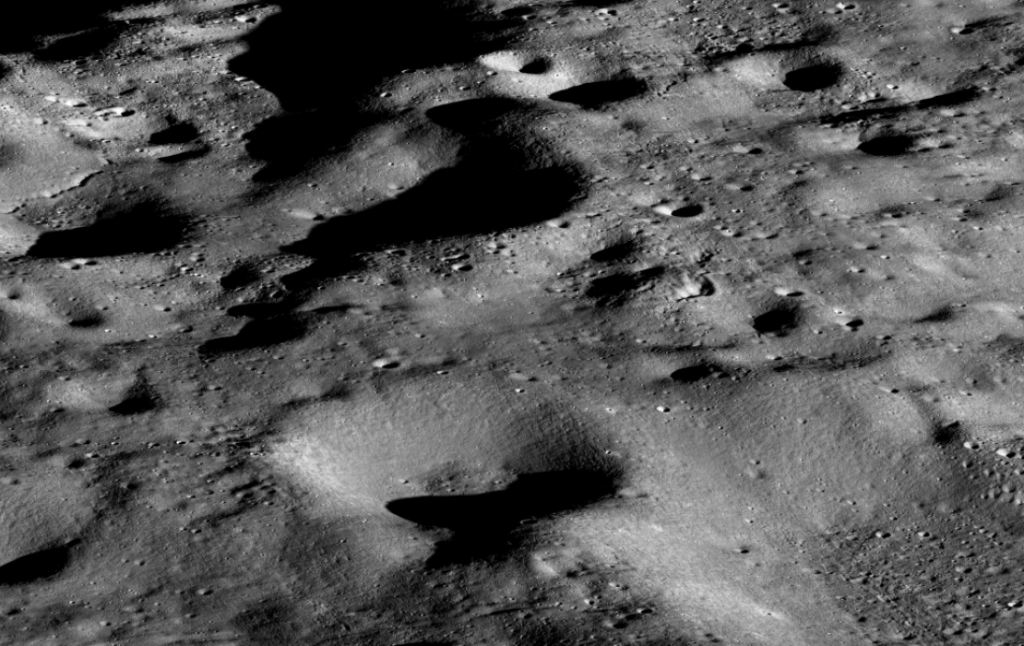
Like the ill-fated Peregrine, the Nova-C mission is part of NASA’s Commercial Lunar Payload Services program, wherein private companies are enlisted to deliver scientific experiments and payloads to the moon. Nova-C is slated to carry a total of eleven payloads, with five belonging to NASA and funded through a CLPS program contract. The remaining payloads are contributed by a diverse set of private customers, ranging from Embry-Riddle Aviation University to the artist Jeff Koons.
Design & Expectations
Diverging from the boxlike design of recent landers, the 2-ton Nova-C boasts a distinctive six-legged, six-sided upright cylinder structure, standing over 13 feet tall and 5 feet in diameter. A successful landing would mark a historic moment, making Nova-C the first American spacecraft to achieve this feat in 50 years. The unique design draws inspiration from NASA’s Project Morpheus, a vertical takeoff/landing craft initiative conducted between 2010 and 2014.
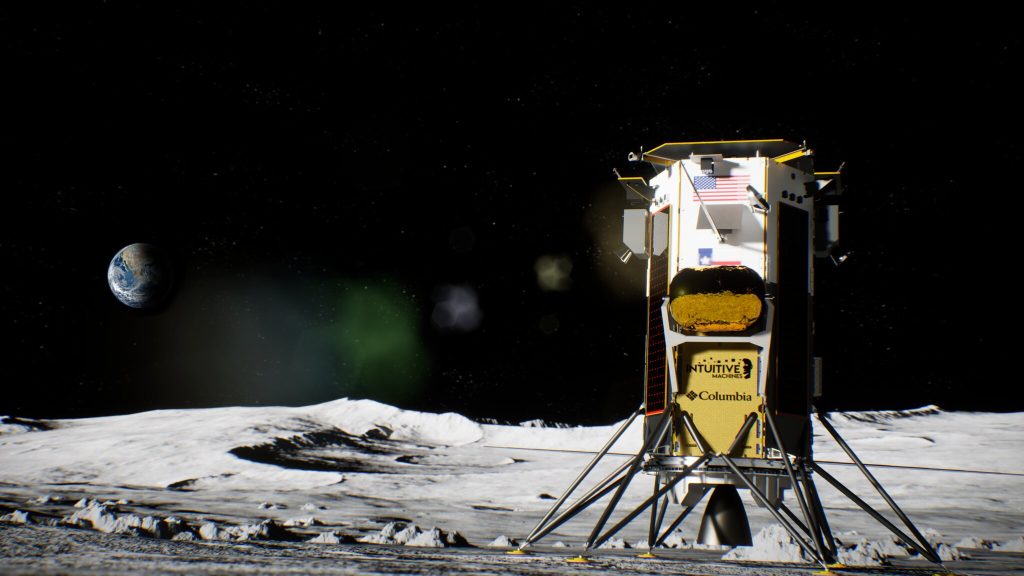
In December, the IM-1 Nova-C lunar lander was delivered to Cape Canaveral, Florida for rigorous testing and verification. It now awaits integration with SpaceX’s Falcon 9 rocket for its upcoming mission. As of now, NOVA-C is set for launch on 13th February. Pending a successful launch, the Moon landing attempt will occur a week after the probe departs Earth.





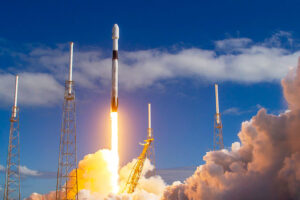
Thank you for your comment! It will be visible on the site after moderation.